10 Traditional Games from India: Get Ready for some Indoor Board and Strategy Games!
Looking for traditional games and board games from India? Here are 10 traditional games from India. Get ready for some fun with indoor board and strategy games!
I am an ardent fan of Pallankuzhi, the traditional Indian board game. I got introduced to the game when i was 8 years old and would play for hours together during the summer holidays.
Recently, I saw Mancala Boardgame at a shop and got reminded of Pallankuzhi. Come to think of it, how many such board games have faded away! I wish to revive some games and memories through this post. I would also recommend these beautiful board games that we created from scratch at Toka Box!
Ashtapada

Like a chess board, the Ashtapada board is divided into an eight-by-eight grid of squares, although they are all the same color. The board has special markings known as "castles", where pieces are safe from being captured or removed from play when mating with an opponent. Each player receives an even number of pieces to play the game. The goal is to move a piece around the board clockwise, entering the castle, and to regain his castle back in a counterclockwise direction so as to make it reach the center. A variant played on a larger ten-by-ten board is known as Dasapada
Chaturanga

Chaturanga, or catur for short, is an ancient Indian strategy game which is commonly theorized to be the common ancestor of the board games: chess, shogi, sittuyin, makruk, xiangqi and janggi.The exact rules of chaturanga are unknown. The name comes from a battle formation mentioned in the Indian epic Mahabharata, referring to four divisions of an army, namely elephants, chariots, cavalry, and infantry. An ancient battle formation, akshauhini, is like the setup of chaturanga.
Moksha Patam (Snakes and Ladders)

Moksha Patam or Parama Padam Or Gyan Chauper is a dice board game from ancient India, popularly known as Snakes and Ladders. It was from India that it spread to the rest of the world. It was a very popular game to be played its main purpose was not only entertainment but also to teach morality. The central concept is liberation from bondage of passions. So the players move from the lower levels of consciousness to higher levels of spiritual enlightenment and finally to Moksha.
Pallankuzhi
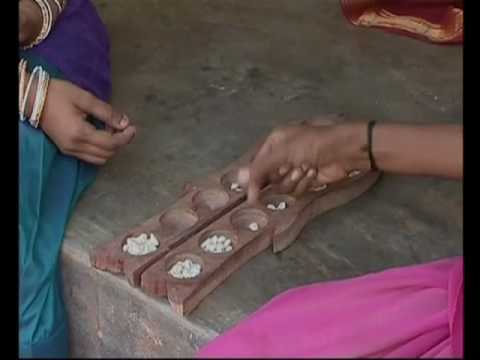
It is a traditional ancient Tamil mancala game played in South India especially Tamil Nadu. Later, the games were spread to other States \ Countries like Karnataka, Andhra Pradesh and Kerala, Sri Lanka and Malaysia. Variants are called as Ali guli mane (in Kannada) Vamana guntalu (in Telugu) and Kuzhipara (in Malayalam). The game is played by two players.
Pallankuzhi is played on a rectangular board with 2 rows and 7 columns. There are a total of 14 cups (kuzhi in Tamil language) and 146 counters.Tamarind seeds and cowry shells (Sozhi (coollli) in Tamil language) are used in this game, to fill the holes of the Alli gulli board.
Aadu puli aatam
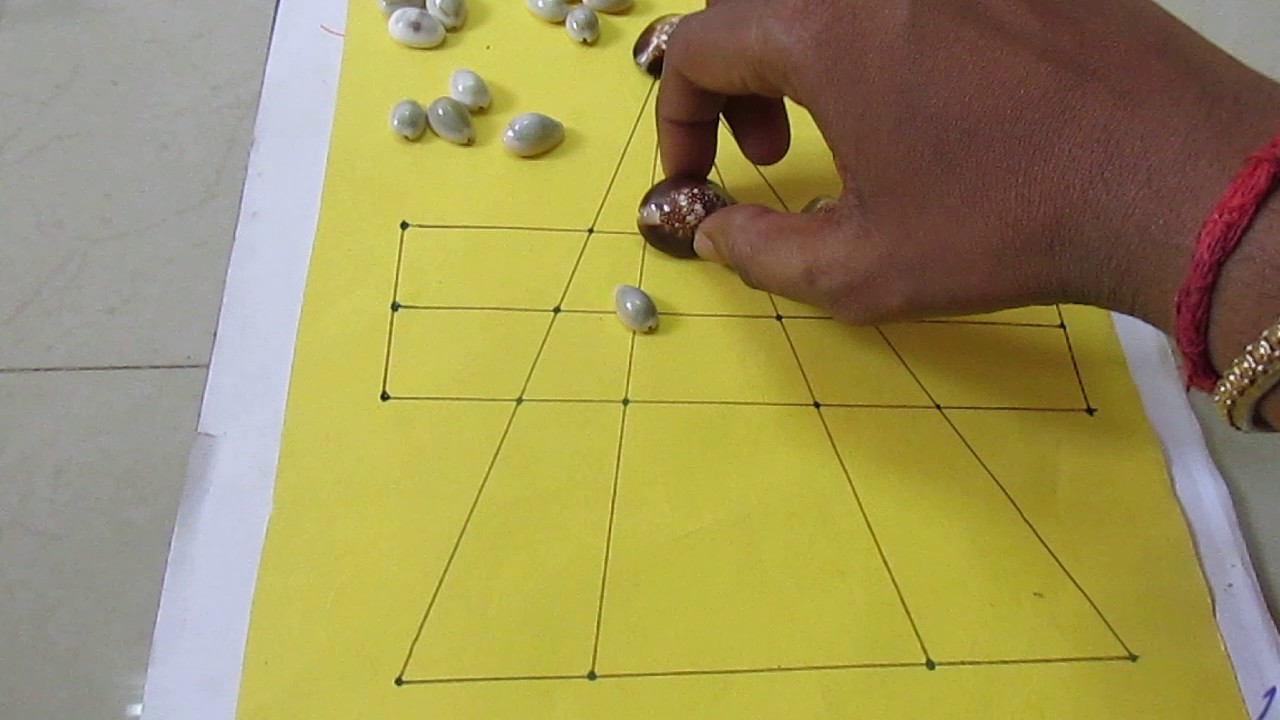
Lambs and Tigers Game locally referred as "Meka puli aata" (Telugu) or "Aadu puli aatam"(Tamil), or Aadu Huli aata (Kannada) or Pulijudam. It is a strategic, two-player (or 2 teams) leopard hunt game that is played in south India.
The game is asymmetric in that one player controls three tigers and the other player controls up to 15 lambs/goats. The tigers 'hunt' the goats while the goats attempt to block the tigers' movements. This has been the most ancient game.
Pachisi
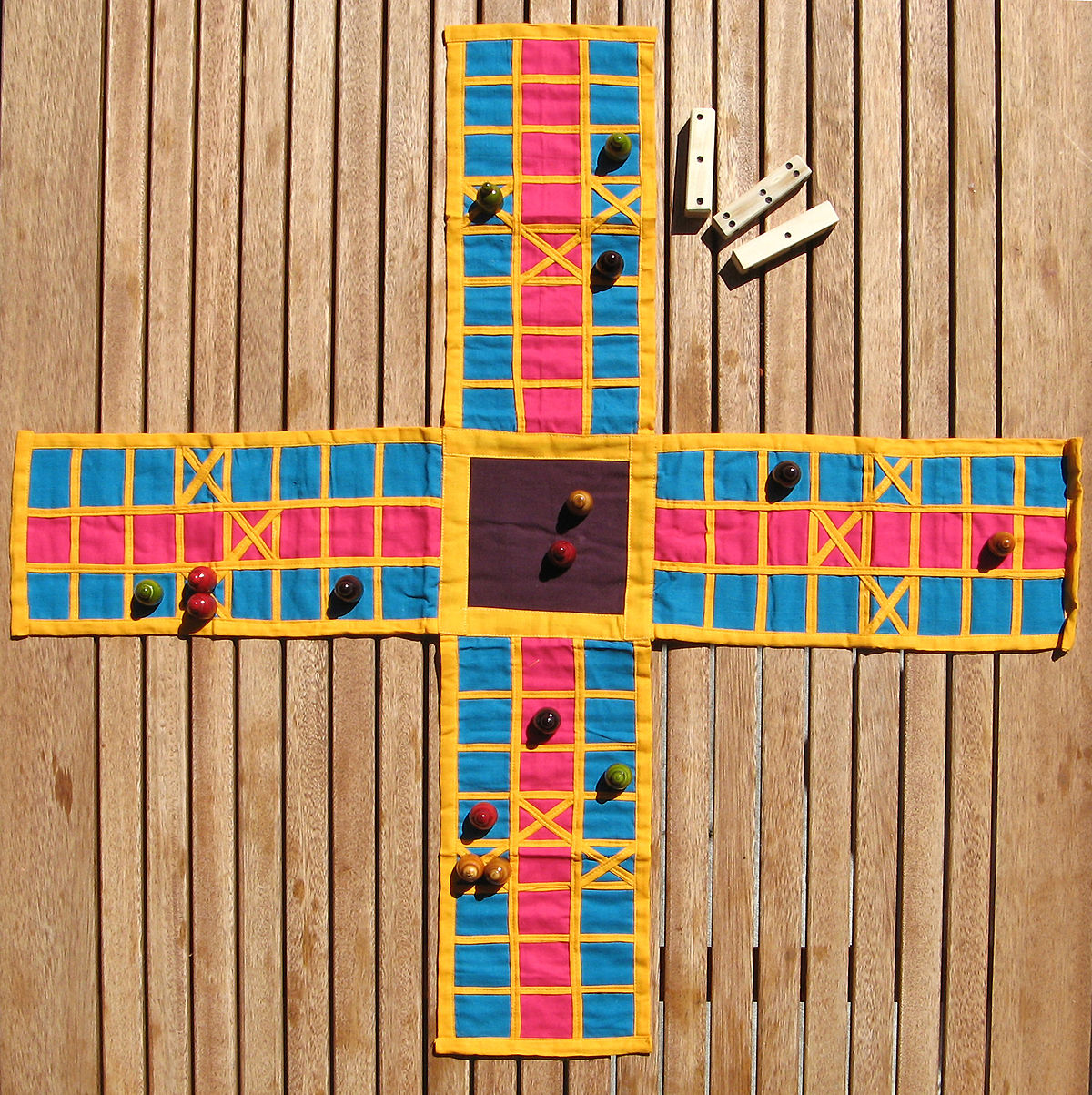
It is a cross and circle board game that originated in ancient India. Pachisi has been described as the "national game of India". It is played on a board shaped like a symmetrical cross. A player's pieces move around the board based upon a throw of six or seven cowrie shells, with the number of shells resting with aperture upwards indicating the number of spaces to move.
The name of the game is derived from the Hindi word pachis, meaning twenty-five, the largest score that can be thrown with the cowrie shells. Thus, this game is also known by the name Twenty-Five.
Pachisi is a game for two, three, or four players. The players are split into in two teams. One team has yellow and black pieces, the other team has red and green. The team which moves all its pieces to the finish first, wins the game.
Pandi Attam (Hopscotch)
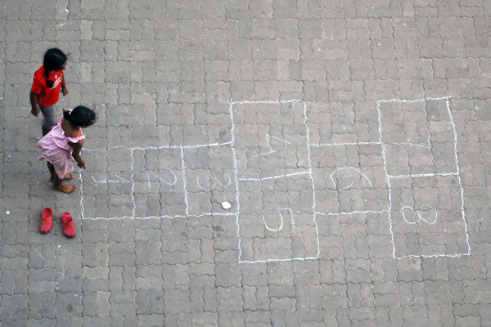
Nondi or Pandi Attam is a very funny hopping game played by the girls in many rural villages of Tamil Nadu. It is known as Tokkudu Billa/Tangidi Billa in Andra Pradesh and Kunte Bille in Karnataka. It is played by the girls in many villages, even today. A popular playground game in which players toss a small object into numbered spaces of a pattern of rectangles outlined on the ground and then hop or jump through the spaces to retrieve the object.
Dayakattai

It is a dice game played by 2 or 4 players. It originated in Tamil Nadu (a southern state of India) and is comparable to another dice game from the country called Pachisi. There are many types of Dayakattai. The word Daya is derived from Tamil word "Thayam" meaning firestone.The game employs a pair of long dice that are shaped like long cuboids, the Dayakattai. These dice also go by other names such as Daayam and Daala
Chauka Bara
It is one of the oldest board games of India that is still played in some parts of the country. It is known as Chowka Bara in Mysuru and as Chakaara or Chakka in north Karnataka. This game is similar to ludo and can be played by 4 players. It is a game of chance that is played with cowry shells (called kavade in Kannada). The players attempt to race their pawns from the starting point to the safety of home. The game improves eye-to-eye coordination and teaches to make strategies.
Saalu Mane Ata
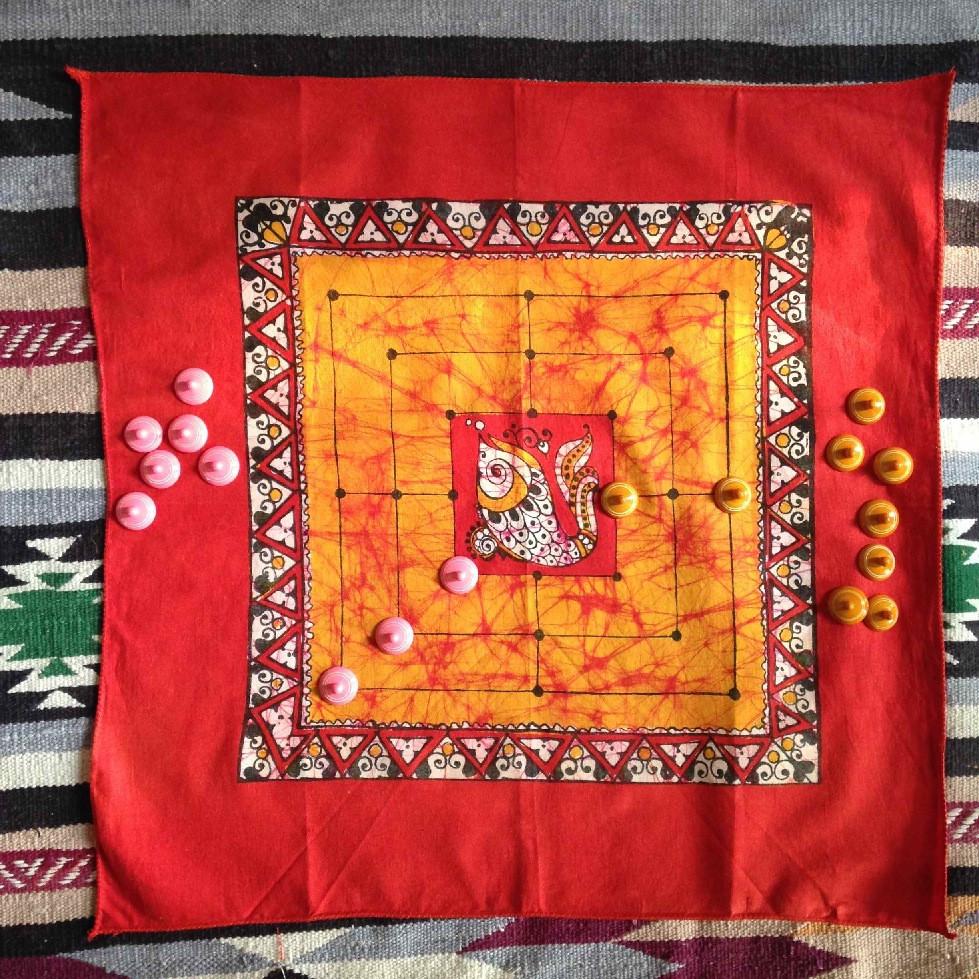
Saalu Mane Ata or Jodpi Ata or Char-Par in Kannada and is popular as Navakankari in various parts of India. This alignment game requires 2 players. Each player is given 9 coins and they try to achieve as many points as possible by getting 3 coins in a row on the game board. It is a complex game that requires strategic thinking.
Let us try and introduce at least some of these board games to our kids. Also, don't forget to share your favorite childhood board game in the comments below.
